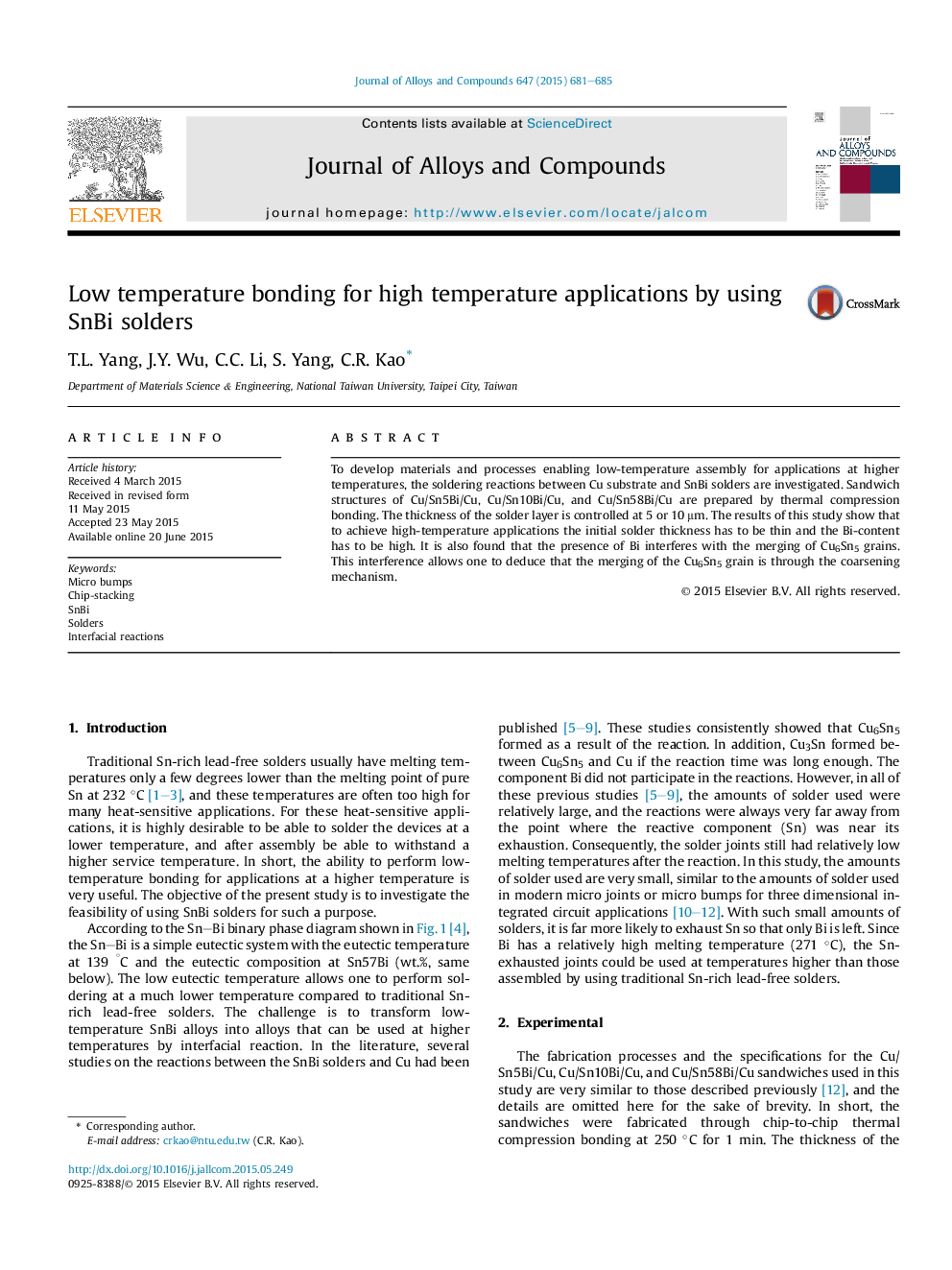| Article ID | Journal | Published Year | Pages | File Type |
|---|---|---|---|---|
| 7998202 | Journal of Alloys and Compounds | 2015 | 5 Pages |
Abstract
To develop materials and processes enabling low-temperature assembly for applications at higher temperatures, the soldering reactions between Cu substrate and SnBi solders are investigated. Sandwich structures of Cu/Sn5Bi/Cu, Cu/Sn10Bi/Cu, and Cu/Sn58Bi/Cu are prepared by thermal compression bonding. The thickness of the solder layer is controlled at 5 or 10 μm. The results of this study show that to achieve high-temperature applications the initial solder thickness has to be thin and the Bi-content has to be high. It is also found that the presence of Bi interferes with the merging of Cu6Sn5 grains. This interference allows one to deduce that the merging of the Cu6Sn5 grain is through the coarsening mechanism.
Keywords
Related Topics
Physical Sciences and Engineering
Materials Science
Metals and Alloys
Authors
T.L. Yang, J.Y. Wu, C.C. Li, S. Yang, C.R. Kao,
